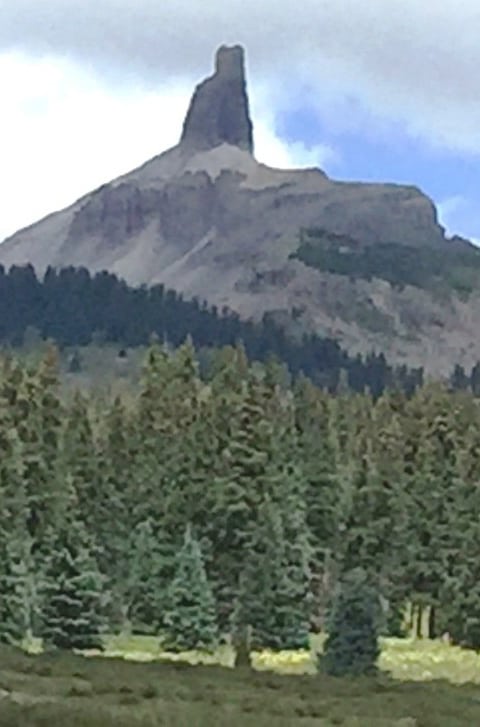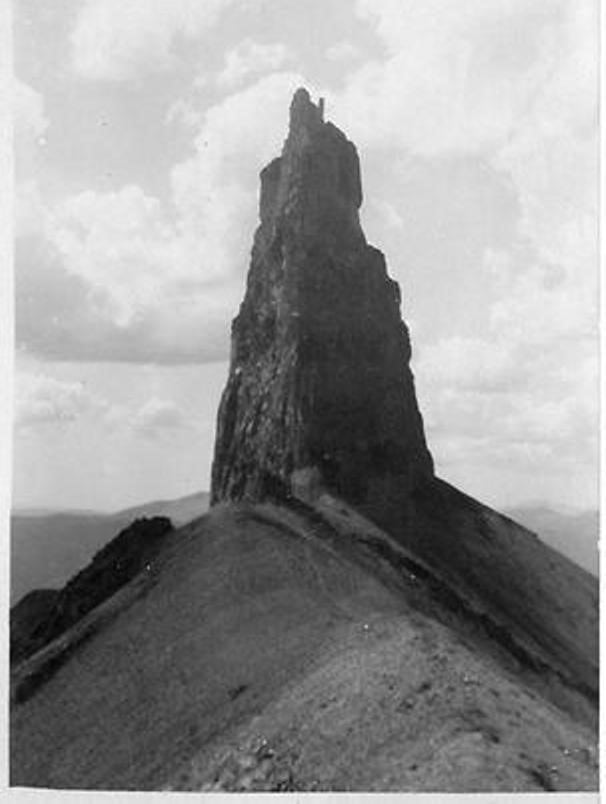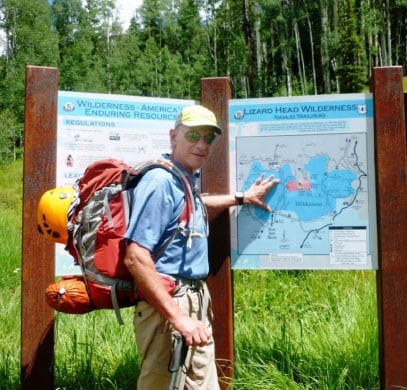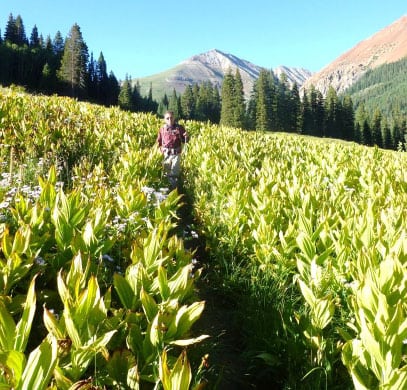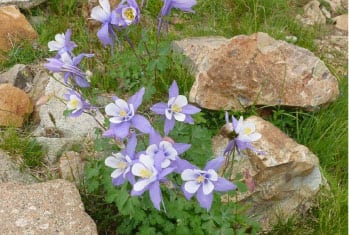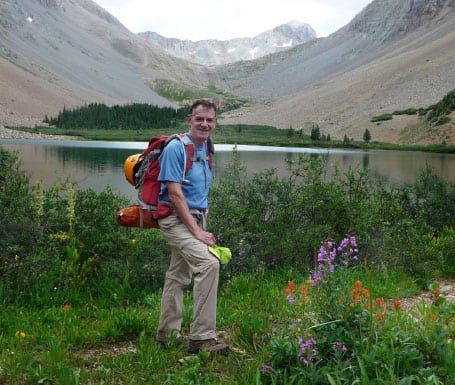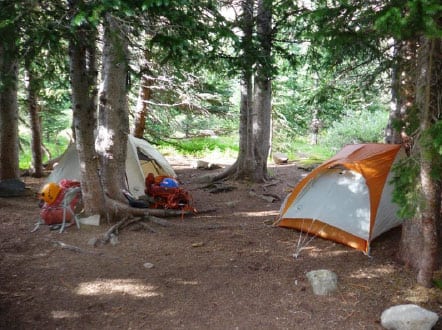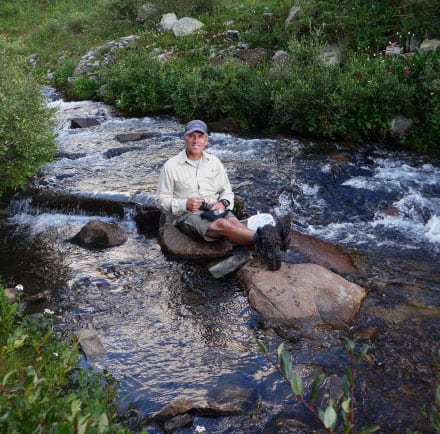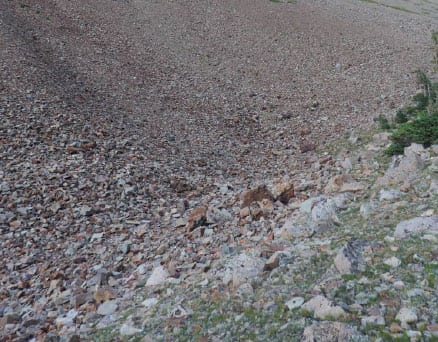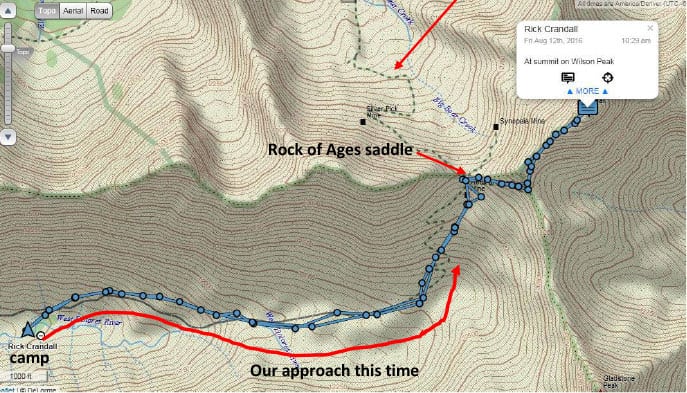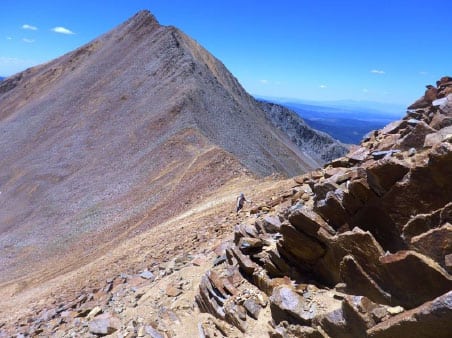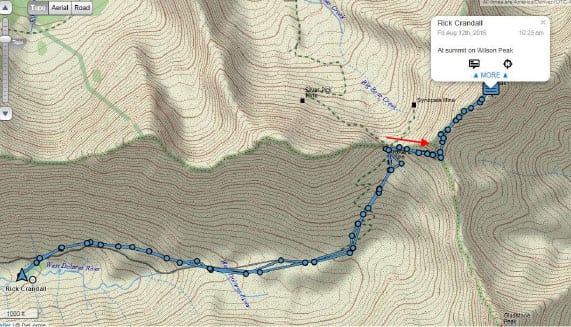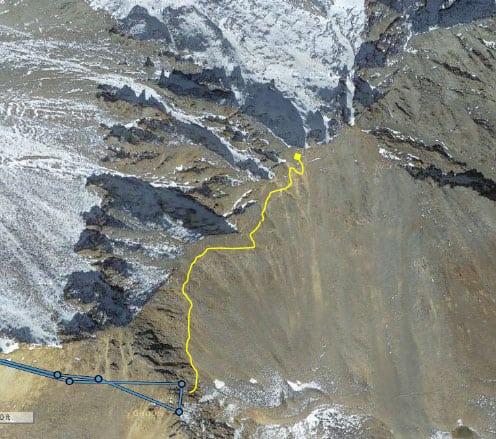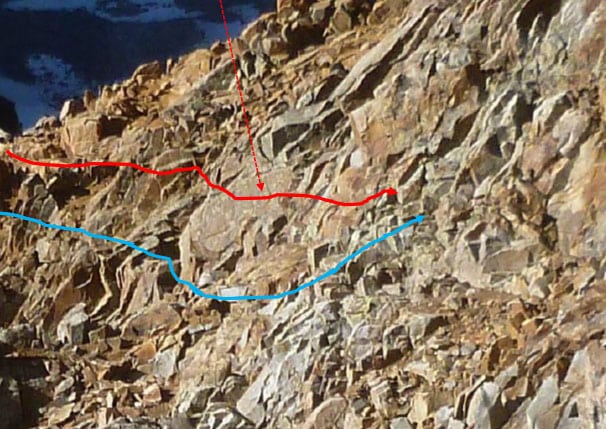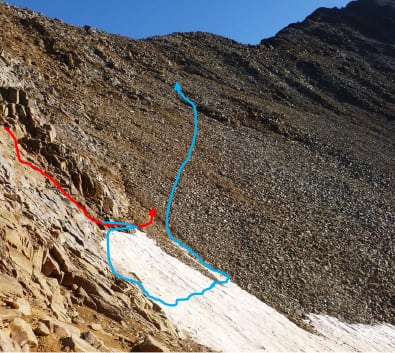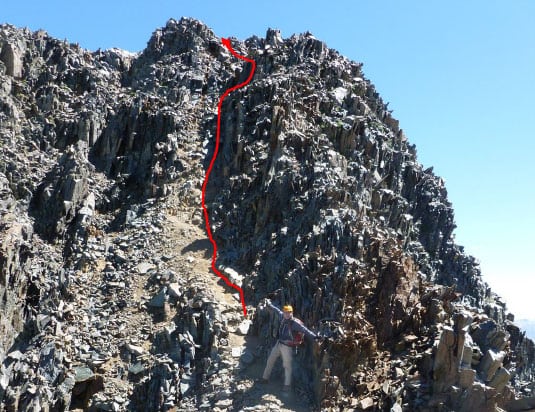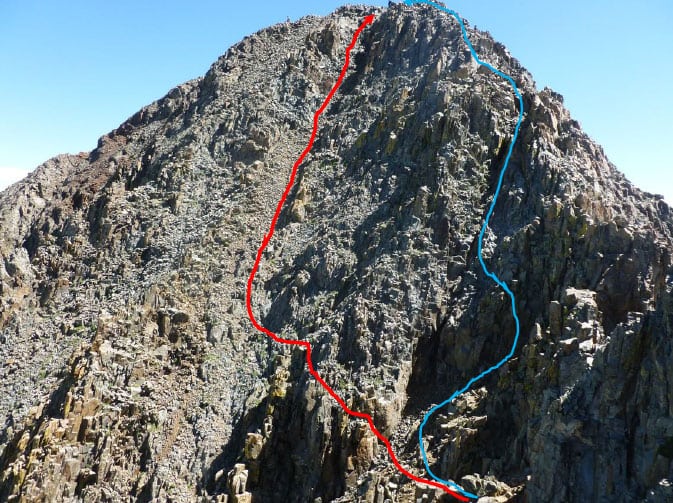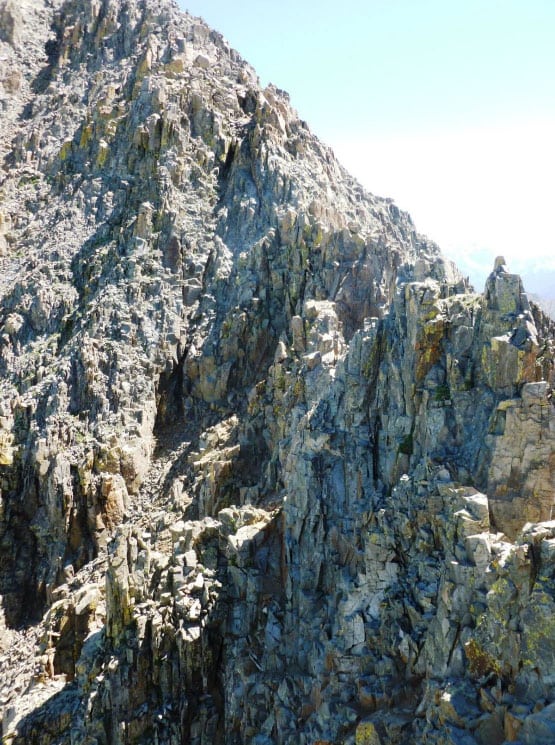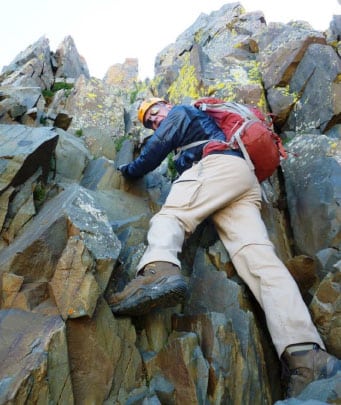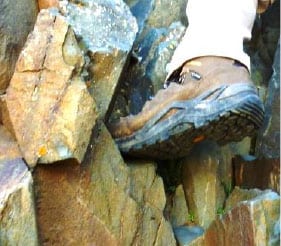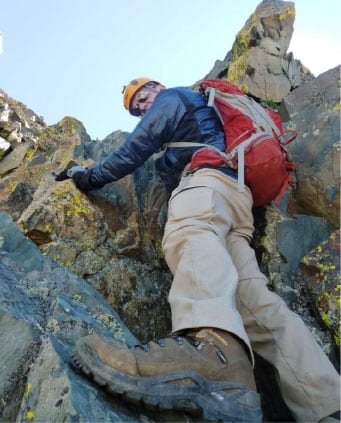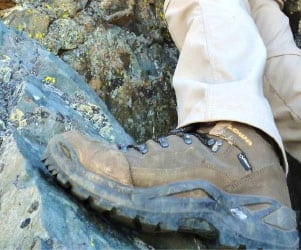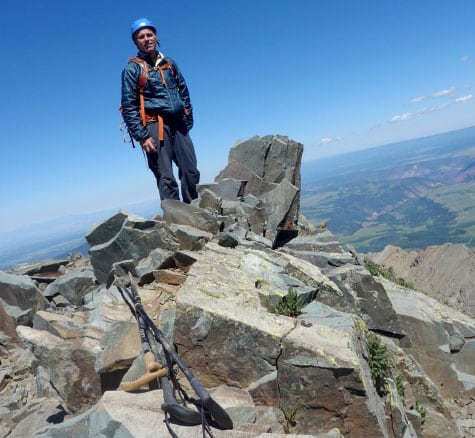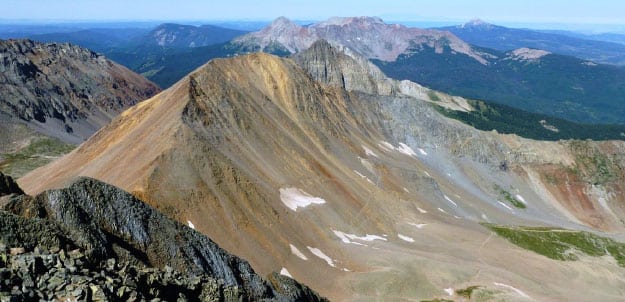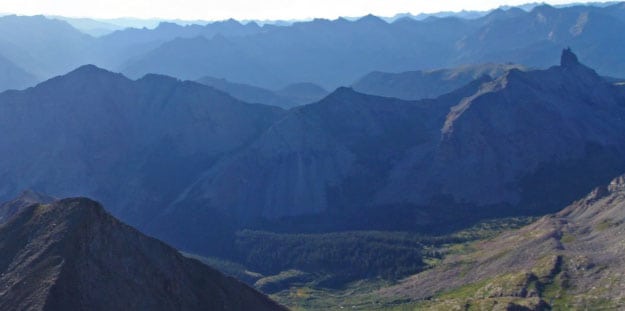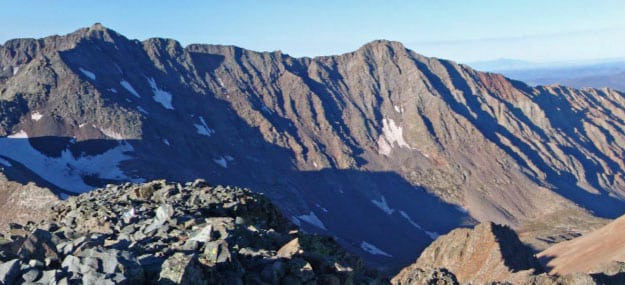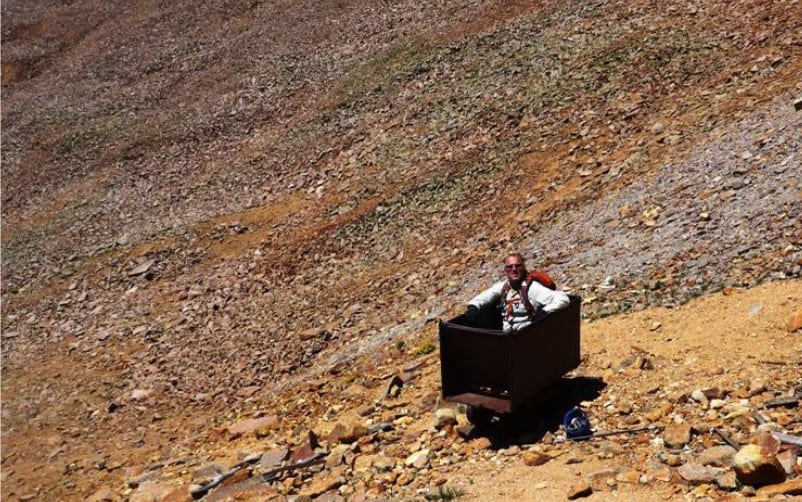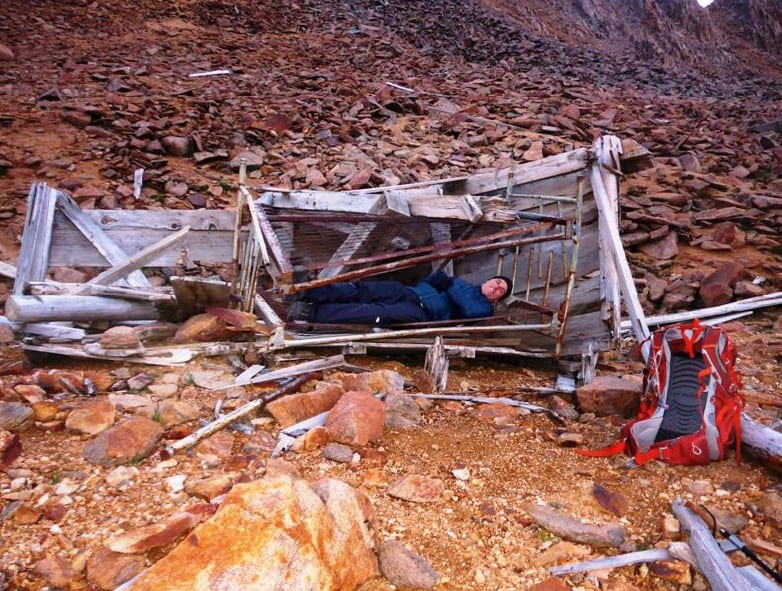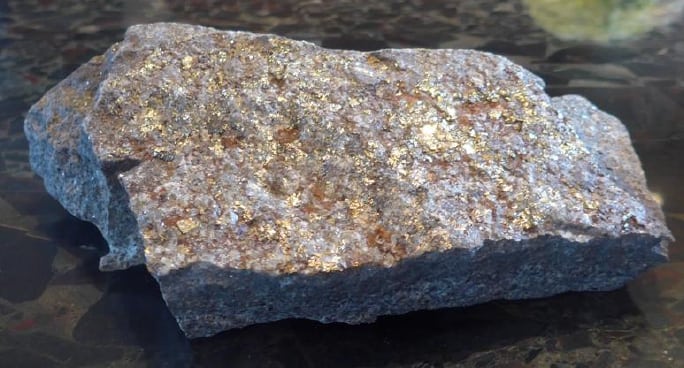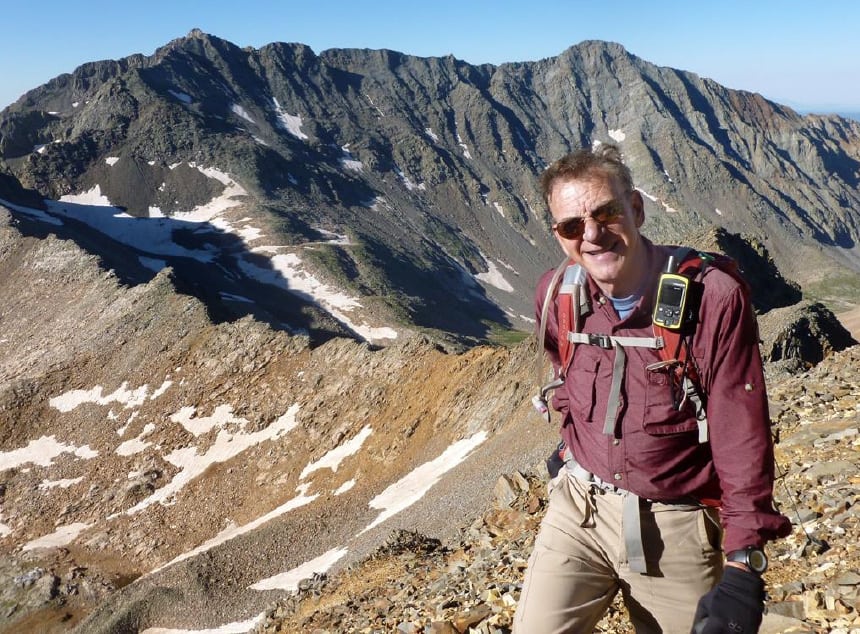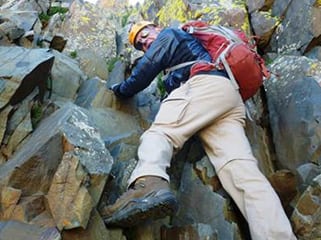
Difficulty: Class 3
Exposure: Top 600’ to summit
Summit: 14,017’
Elevation Gain: 5000’ from TH; 3000’ from camp
Round Trip: 16 miles from TH; 7 miles from camp
Trailhead: Navajo Lake
Climbers: Rick Crandall; Rick Peckham August 12, 2016
Wilson Peak is one of Colorado’s more iconic 14,000’ mountains, ranking with Pyramid, Maroon Bells and Capitol in the Aspen area, in each case due to their individual prominence. Wilson Peak strikes a mighty profile over the Telluride area.
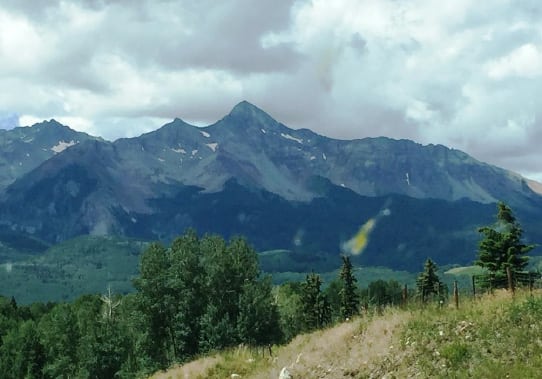
Wilson Peak shot taken from CO 145 just beyond Lizard Head Pass.
 Wilson Peak is even more easily recognized and familiar for another reason, it figures prominently on the Coors beer labels and products! Adolf Coors choose this mountain to represent his beer in 1873 Rick Peckham and I tried this mountain 2 weeks ago, but turned around just 600’ from summit (actually the most challenging part) due to severe altitude sickness. Rick P. has been coming down from his Alaska home for several weeks each summer to partner with me in the joy of climbing and summiting Colorado’s 14ers. This time he hadn’t yet quite acclimatized to the high altitude. That story, which includes a gold find near the Silver Pick Mine and shows the approach from the Rock of Ages trailhead, can be found at: www.rickcrandall.net/wp-content/uploads/pdf/Wilson Peak climb.pdf
Wilson Peak is even more easily recognized and familiar for another reason, it figures prominently on the Coors beer labels and products! Adolf Coors choose this mountain to represent his beer in 1873 Rick Peckham and I tried this mountain 2 weeks ago, but turned around just 600’ from summit (actually the most challenging part) due to severe altitude sickness. Rick P. has been coming down from his Alaska home for several weeks each summer to partner with me in the joy of climbing and summiting Colorado’s 14ers. This time he hadn’t yet quite acclimatized to the high altitude. That story, which includes a gold find near the Silver Pick Mine and shows the approach from the Rock of Ages trailhead, can be found at: www.rickcrandall.net/wp-content/uploads/pdf/Wilson Peak climb.pdf
This time we decided to try another longer but prettier approach from the Navajo Lake trailhead which entails backpacking 5 miles and 2000’ up to Navajo Lake and setting camp for a climb the next day. We both look forward to the camping so that was actually a benefit – and on climb day it reduces the climb by 800’ and one mile.
The Navajo Lake trailhead is reached by driving past Telluride on CO State Highway 145 over Lizard Head Pass. The Pass is named from the 13,119’ mountain called Lizard Head, a spectacular, dangerous and most difficult-to-climb feature that used to look more like a lizard head before a major rock slide years ago. It was used as a logo by the Rio Grande Southern Railroad.
Lizard Head is one of the most difficult summits in Colorado to climb. The story of the first ascent makes a memorable and harrowing tale. In the words of Albert Ellingwood:
A rottener mass of rock is inconceivable. The core may still be solid but the “surrounding tuffs” are seeking a lower level in large quantities. This far-advanced disintegration was our greatest obstacle. Absolutely the whole surface of the rock is loose and pebbles rain down from the sides as readily as needles from an aging Christmas tree. In many places one could with one hand pull down hundreds of pounds of fragments, and occasionally we could hear the crashing of small avalanches that fell without human prompting.
Backpacking to Navajo Lake
So, enough about Lizard Head and on to our climb. The weather had been rainy and stormy for nearly two weeks, typical of the summer monsoons. I was studying weather daily, and despite the clouds you see in the first photo of this story, I was confident the pattern was changing and a high-pressure ridge coming from the West Coast would hold off the wet weather from the south for a few days. We committed to go.
It’s a 5 hour drive from Aspen and we got to trailhead by 12:30pm.
We donned our gear and headed toward the Lake.
Soon we were in one meadow after another of a lily kind of plant – miles of it with a narrow path leading through and up.
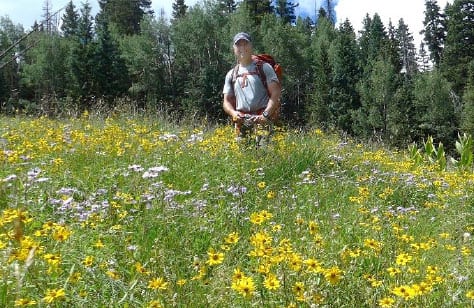
Despite it being mid-August, wildflowers were still in profusion, adding to the beauty of the hike.
We got to Navajo Lake by 5pm and hiked around it to the last cluster of trees you can see in the background above the Lake. Gladstone Peak, a named 13er is in the distance.
For those looking for a great hike – this is about as nice as hiking to Capitol Lake.
We found an ideal campsite on flat, pine-needled ground…
… and near a stream still running from snow melt from the high peaks.
Here Rick P. is enjoying his island in the stream and pumping/filtering fresh water for our meals and pack bladders anticipating an early rise the next morning.
The Climb
The next morning we were up and on the trail in the dark at 3:30 am. Despite my confidence that we’d have a clear day – a rogue thunderstorm could always show up as often does in early afternoons in August. Our route would be exposed nearly the whole time.
We were almost immediately out of the trees and hiking up a loose-rock trail on a decent path we could see with our headlamps on.
By 6 am, there was enough light to actually see the rocky slopes we were ascending.
We were heading towards the Rock of Ages saddle after which the real climbing would start.
We got to the Rock of Ages saddle at 13,000’ right at 7am, nice and early and well lit by this time. This is actually a shot of the saddle later in the day from on our way down.
Next we headed up to a higher, smaller saddle on Gladstone ridge at 13,400’ through larger loose rock.
When we got to that upper saddle, there was a great sight behind us – the two tougher 14ers
I would have left to do after this Wilson Peak. From this vantage, they looked totally
unapproachable – Mt. Wilson on the left and El Diente on the right.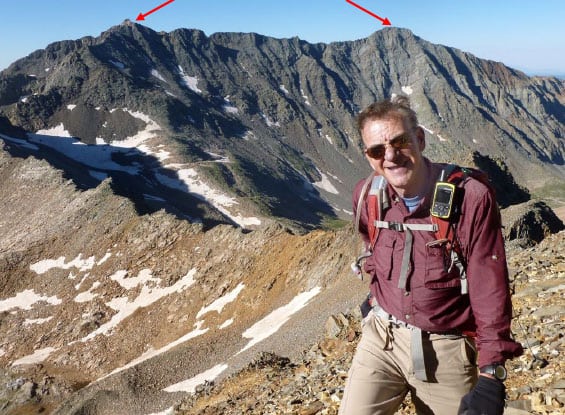
This is as far as we’d gotten two weeks ago when we turned around (the blue line).
The yellow line shows what we had left to do – and there’s where the climbing starts.
For those thinking of climbing this mountain – at this point from the upper saddle, there are a few ways to head up to the Southwest ridge of Wilson Peak. If you head straight off the saddle you quickly wind up on smooth, tilted rock with no hand-holds. Experienced climbers walk across it (red line), ignoring the consequences of a slip. I got part way across it and didn’t like it. We didn’t see then, but we did on the way back from today’s climb, that just 15’ below those slabs were good Class 3 moves with great hand-holds to accomplish the same thing (the blue line is approximate).
So what we did was to down-climb 100’ as described in some trip reports in an attempt to get just under those cliffs (red line). However, as you can see, there was still snow left right where we needed to go – and it was still frozen from the night temps. We had no spikes to help out.
It got too treacherous to continue, so we reversed, went down further where the snow was a bit softer and kick-stepped across, finally heading toward the ridge (blue line).
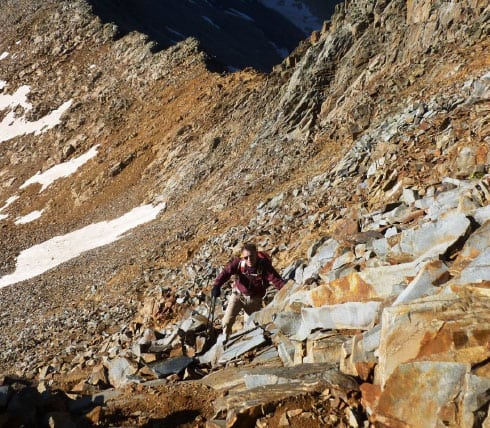
Finally we got well above that upper saddle and headed up toward the Southwest ridge where the climbing became Class 3 but fun. Once on the Southwest ridge it was very obvious where we were heading.
This looks like a summit ahead, right? That’s me pointing to the remaining short, really steep bit to get there.
But, as is often the case on these 14ers, this is a false summit. We got to the top of it (at 13,900’) – and then we saw the real summit of Wilson Peak. Yikes. So to even start that climb, you have to down-climb the back side of the false summit we were on. Here’s another tip for climbers – there’s a steep, narrow gully on the backside of the false summit that looks like a path – that’s the ugly way down (just ask us) – instead climb down the right side of that gully and it’s fun with good rock (which we learned on return).
OK, so here’s our next mistake that you should avoid. We’d read about climbing up a gully to summit. The obvious gully in the middle is where we aimed (red line) and we took it all the way up. It was loose, steep and really ugly. Without Rick P. experimenting a route, I’d probably still be up there.
The right way is the blue line – I know it doesn’t look friendly at all, but it is actually great fun, solid with handholds everywhere as we learned on the way down.
So how do you get up a wall like that?
When the rock is solid and has lots to hold on to – you don’t need much of a toe hold to feel safe.
In fact, with good hand-holds, you don’t even need a nook for your foot – just an angle on the rock will do.
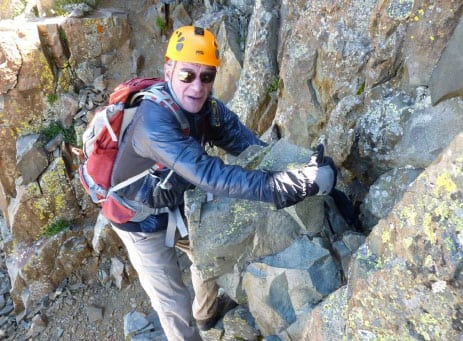
Sometimes you need to get around a protrusion that pushes your upper body out – better make sure that rock is solid before pulling out on it!
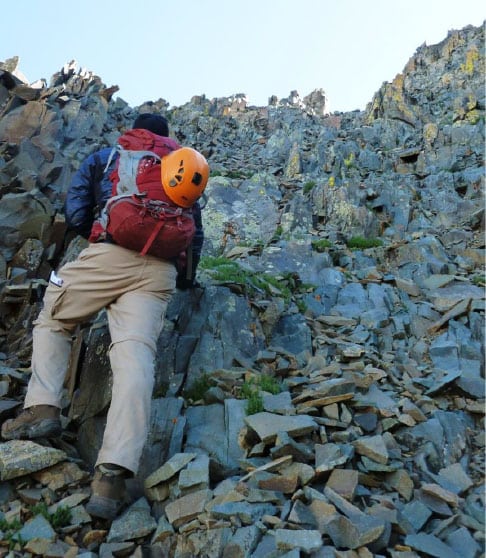
Summit in sight!
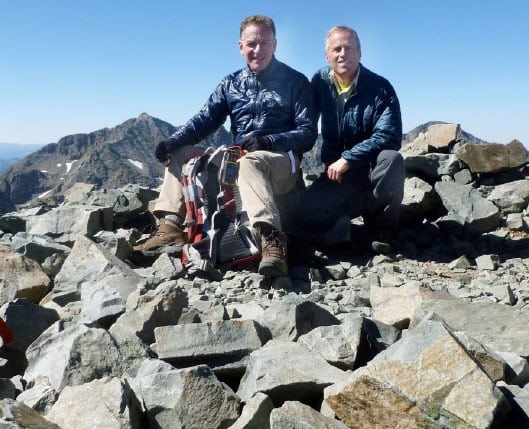
Oh yes.
Summit Wilson Peak, 14,017’ at 10:30 am, 7 hours from camp even with our route errors.
The views from summit are nothing short of stunning. San Juan 14ers everywhere.
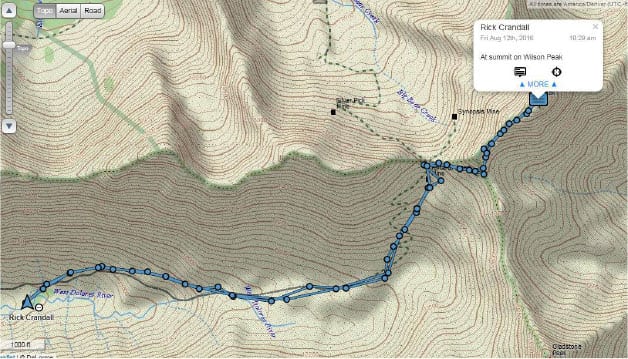
This was our whole route with the DeLorme InReach satellite message I sent from the top.
It was a glorious, “bluebird” day, not a cloud in sight and still only 10:30am. We relaxed at summit, ate a bit and reluctantly started to head down at 11am. On the descent we got the whole route perfect – with all the corrections I mentioned above. it took us only 4 ½ hours to get back to camp – crushed it J
Just as we left the summit we met two guys in their mid-thirties heading up. We stopped to chat. Rick P. is always shooting off about how many 14ers I’ve done at my advanced age – and I got a kick out of the response of one of the guys: “Wow and I’ve been worrying about getting to age 60 with nothing left to live for – you’re proof you can still do stuff – you have right now just changed my whole outlook on life!”
Now I have to admit that’s pretty awesome – all I have to do is keep doing what I love and it inspires others to keep doing the same. I said, “Hey, eat right, stay fit and low stress” to which I got big grins and fist pumps. I can’t count the number of times I’ve heard similar comments on climbs and elsewhere.
On the way down from the Rock of Ages saddle, we were just giddy. Two weeks ago we had to turn around – today we got it, feeling great, super weather and a great mountain now in our experience.
We ran into some very old, discarded mining equipment – of course Rick P. couldn’t get off the mountain without clowning around. This mining cart is heavy – here we’re about 12,800’ how did they get it up here?
Here’s an old mining shack with a bunk bed still in it from 1890!
And here’s the block of lode gold I brought back from the first attempt at this summit – the background of the mines in the area is in the first-attempt story. See: www.rickcrandall.net/wilson-peak-southwest-ridge-first-try
Wilson Peak was my 54th fourteener. My biggest challenges remaining to climb them all are shown right behind me – Mt. Wilson and El Diente – they are now my focus.
Rick Peckham is a great climbing buddy – and I hope we get a shot at those peaks while he’s still here in the lower 48.




